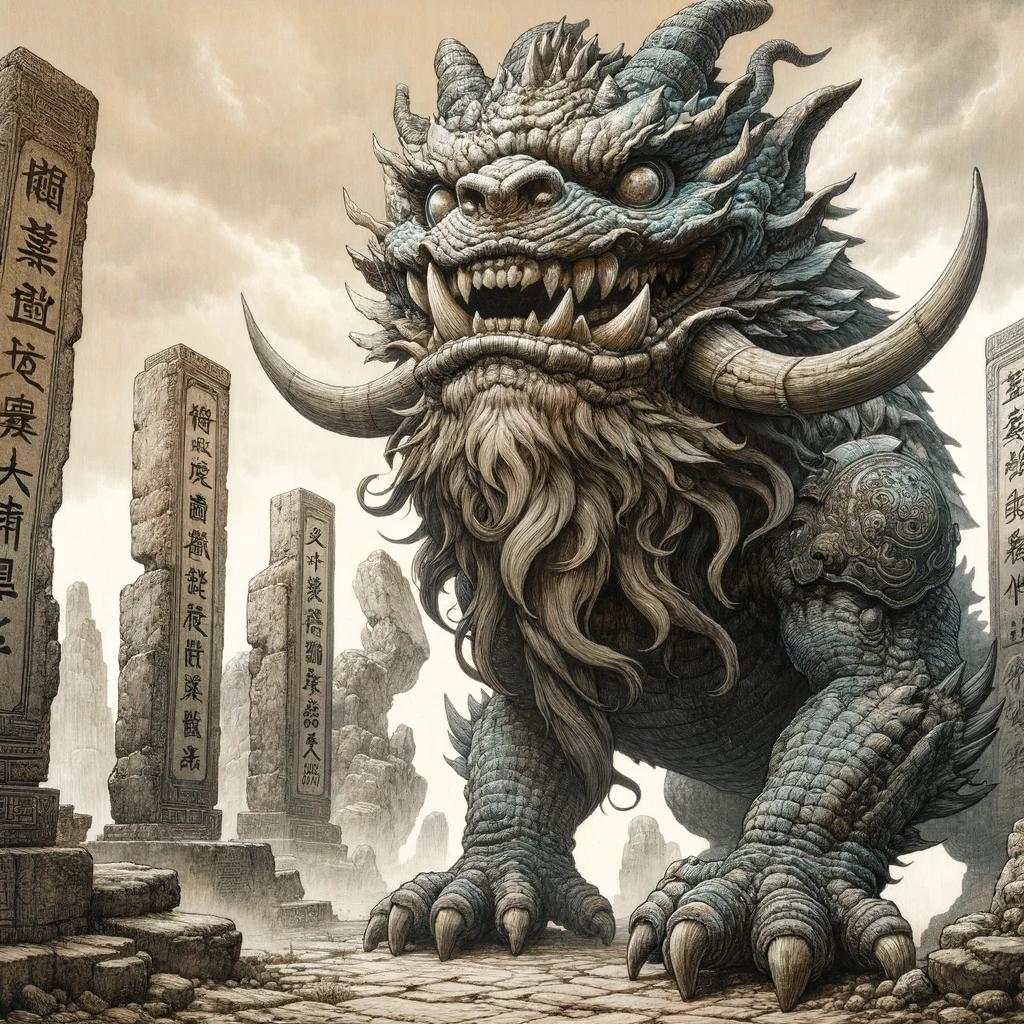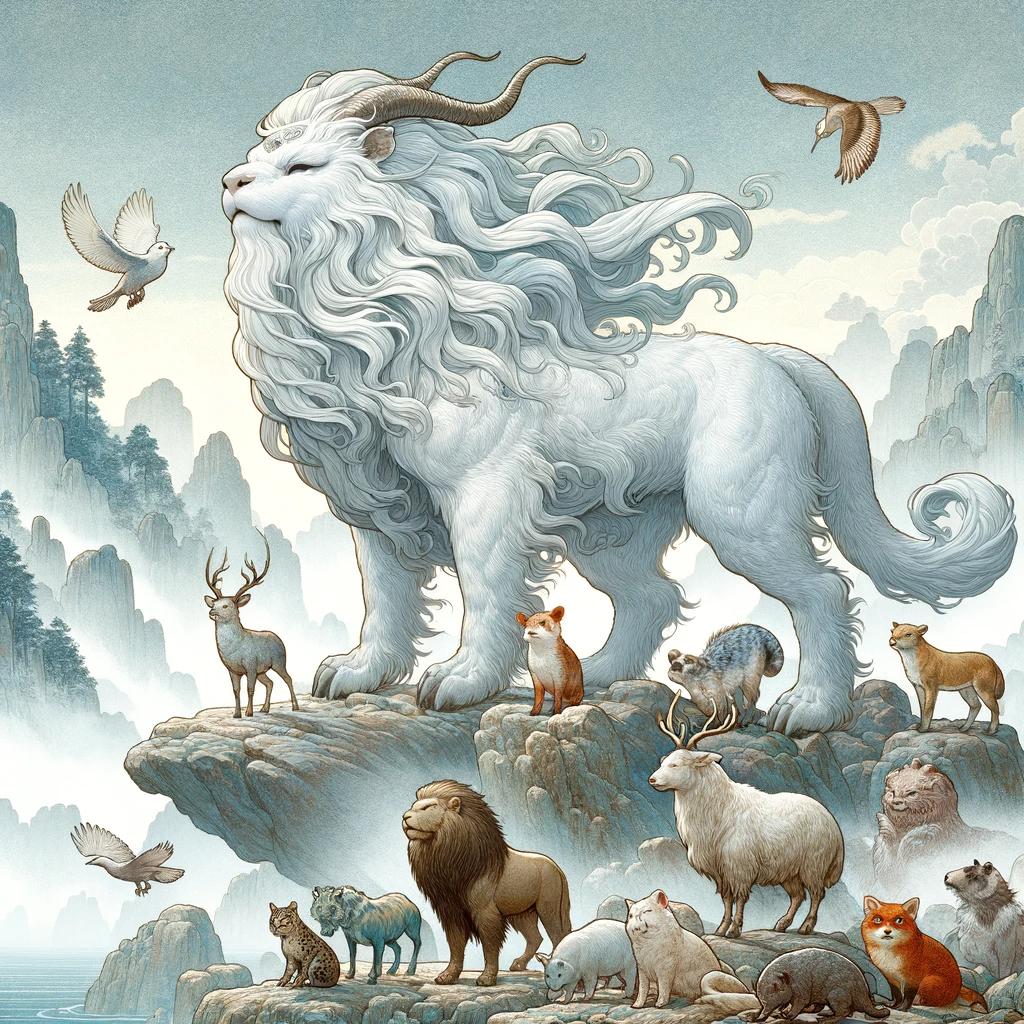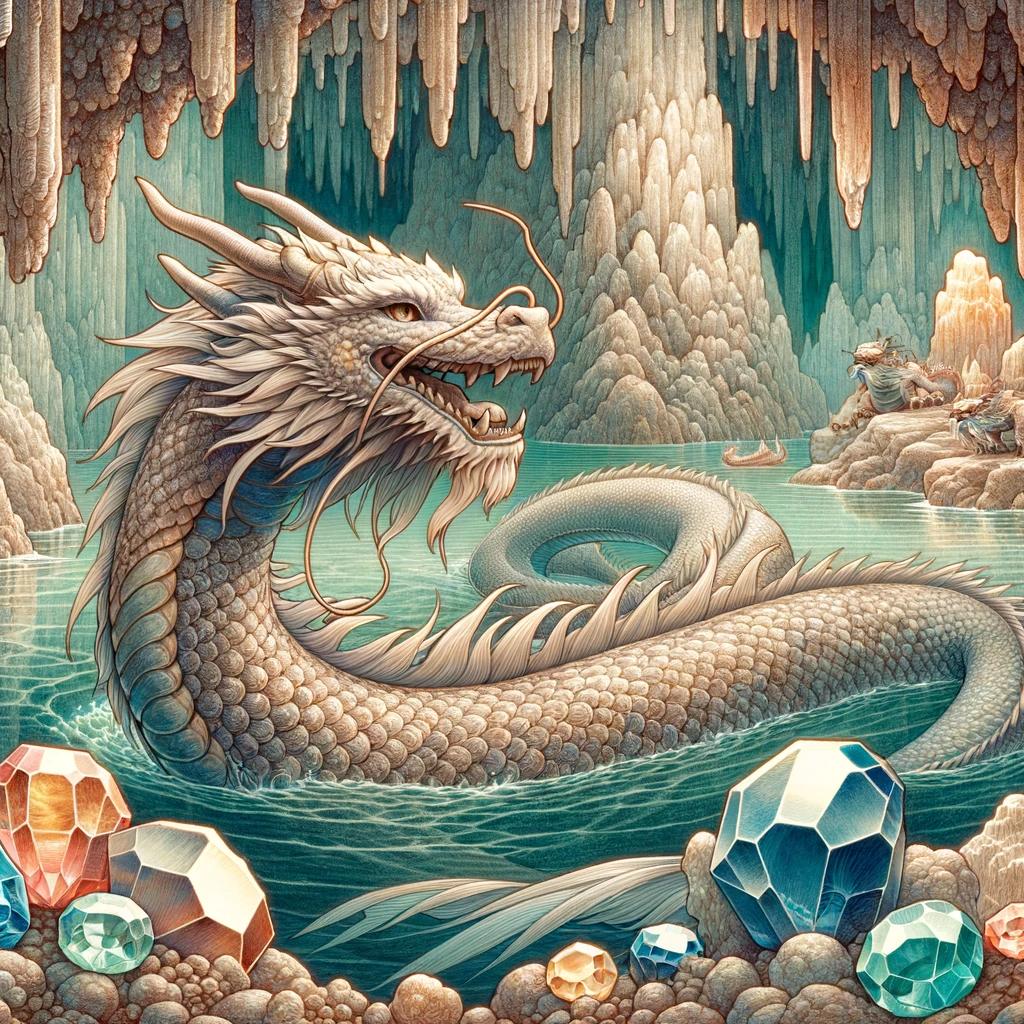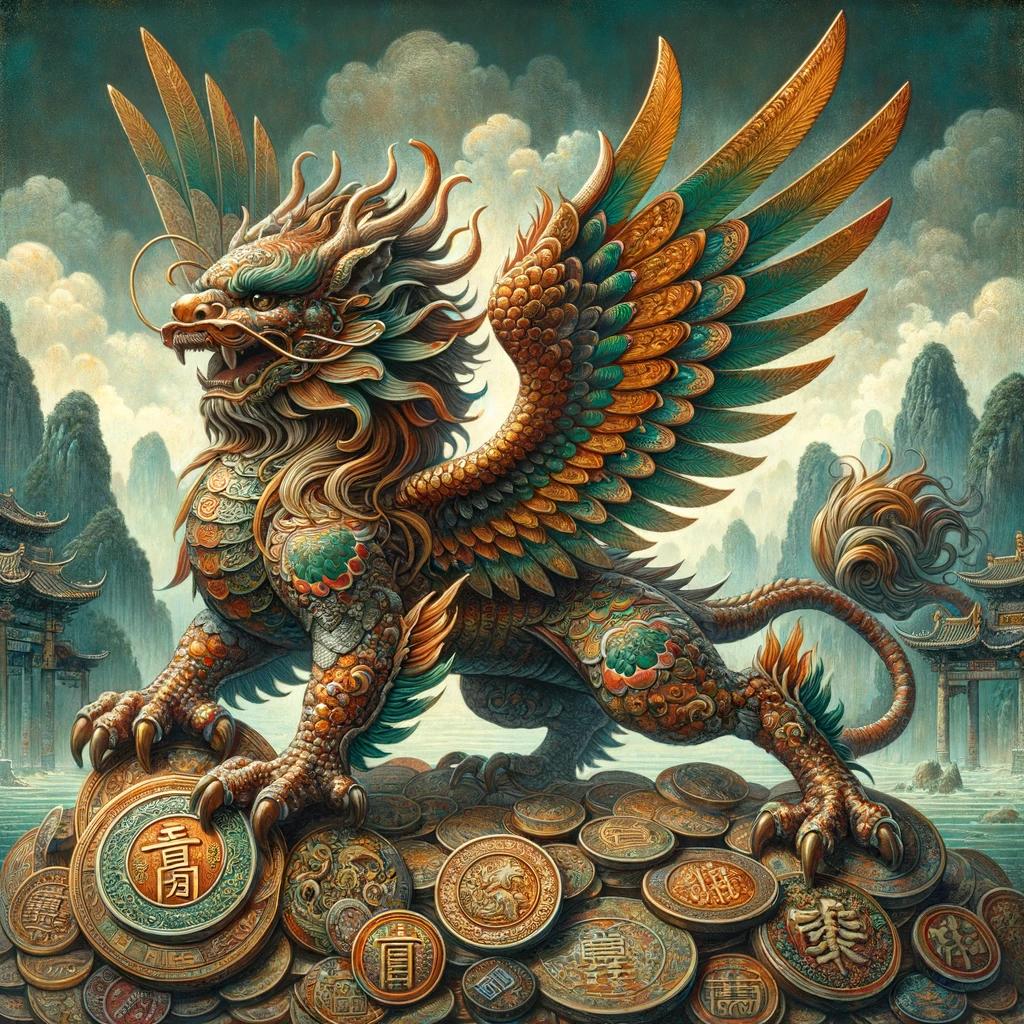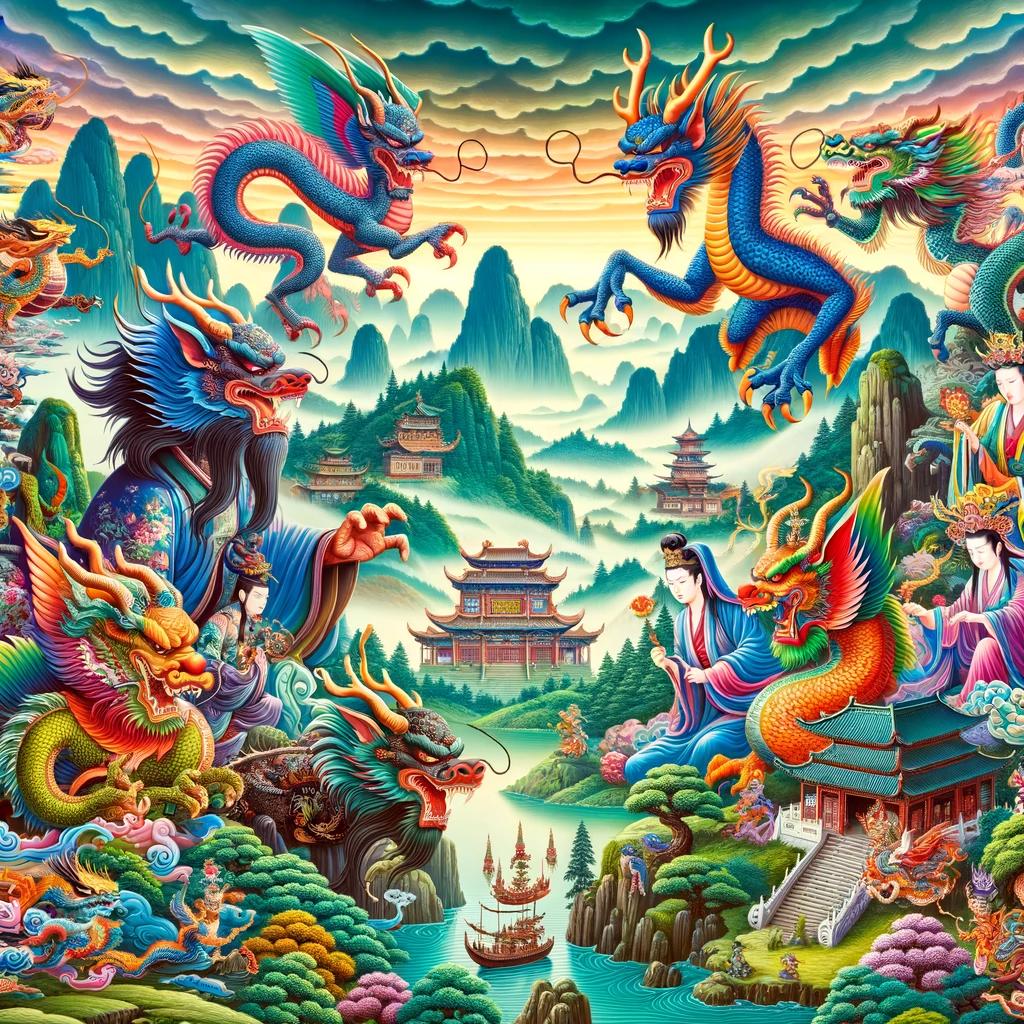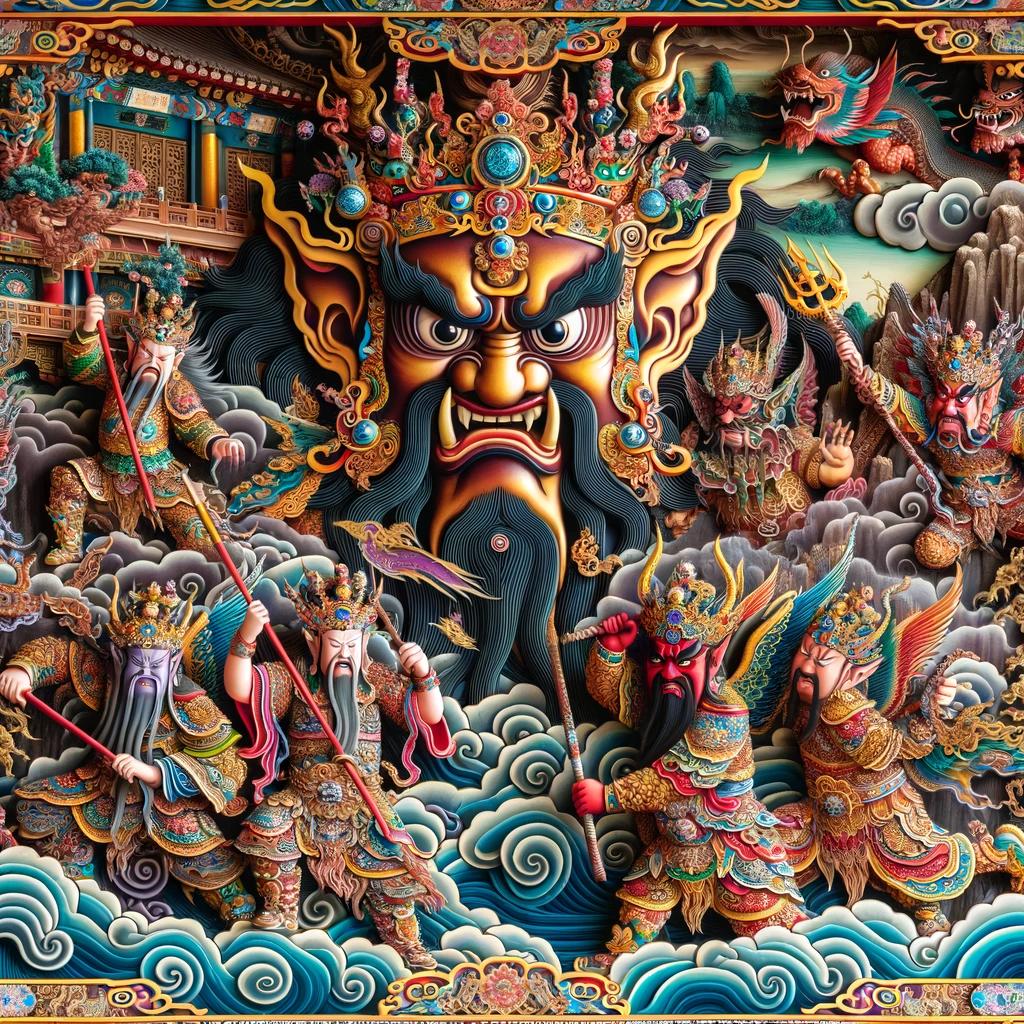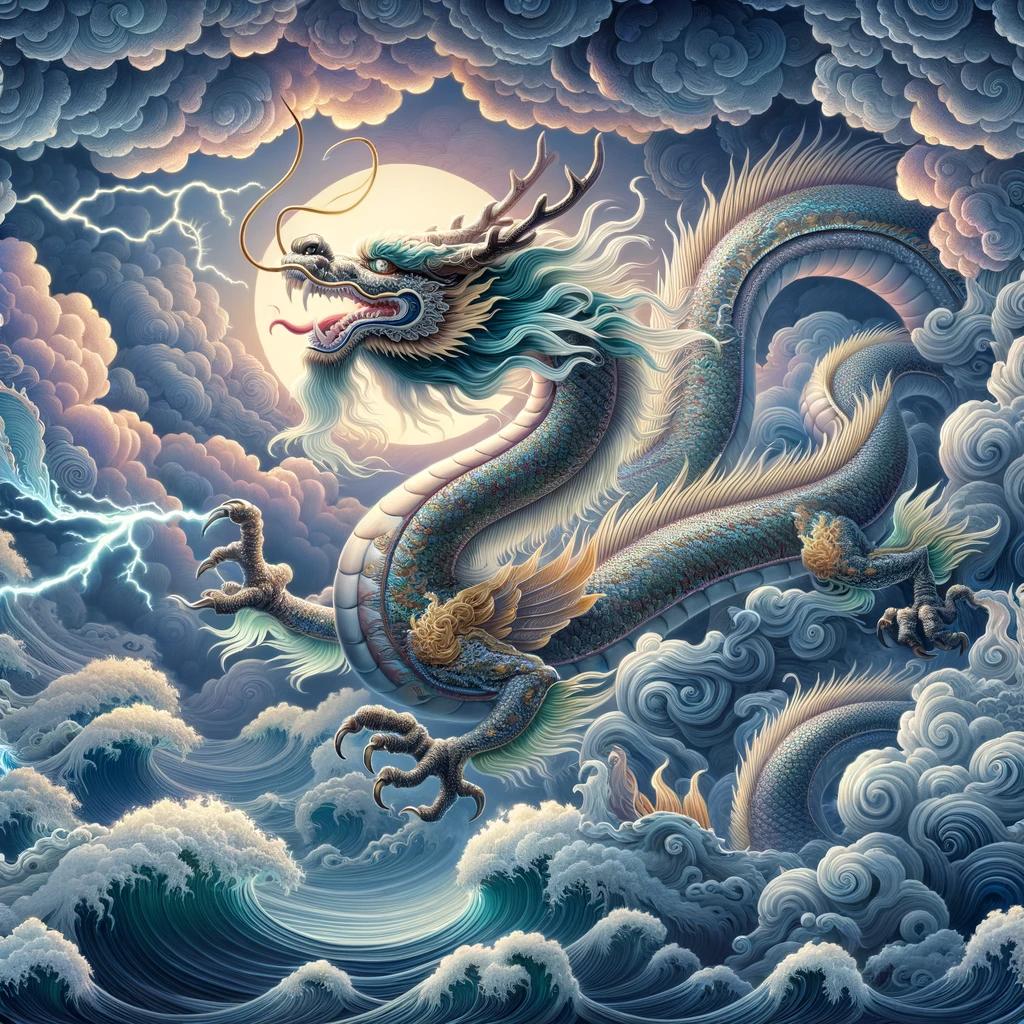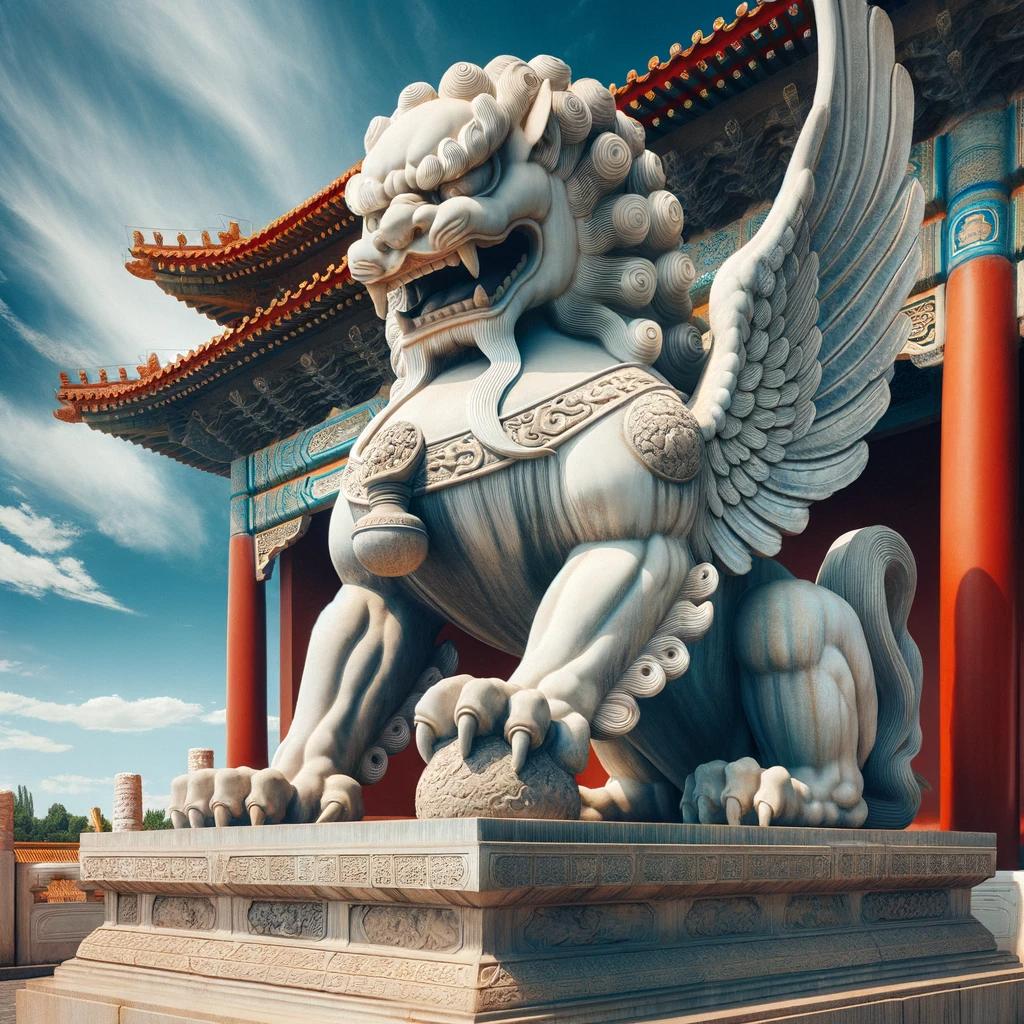Dijiang Chinese Mythology: Unveiling the Mystical Creatures and Gods
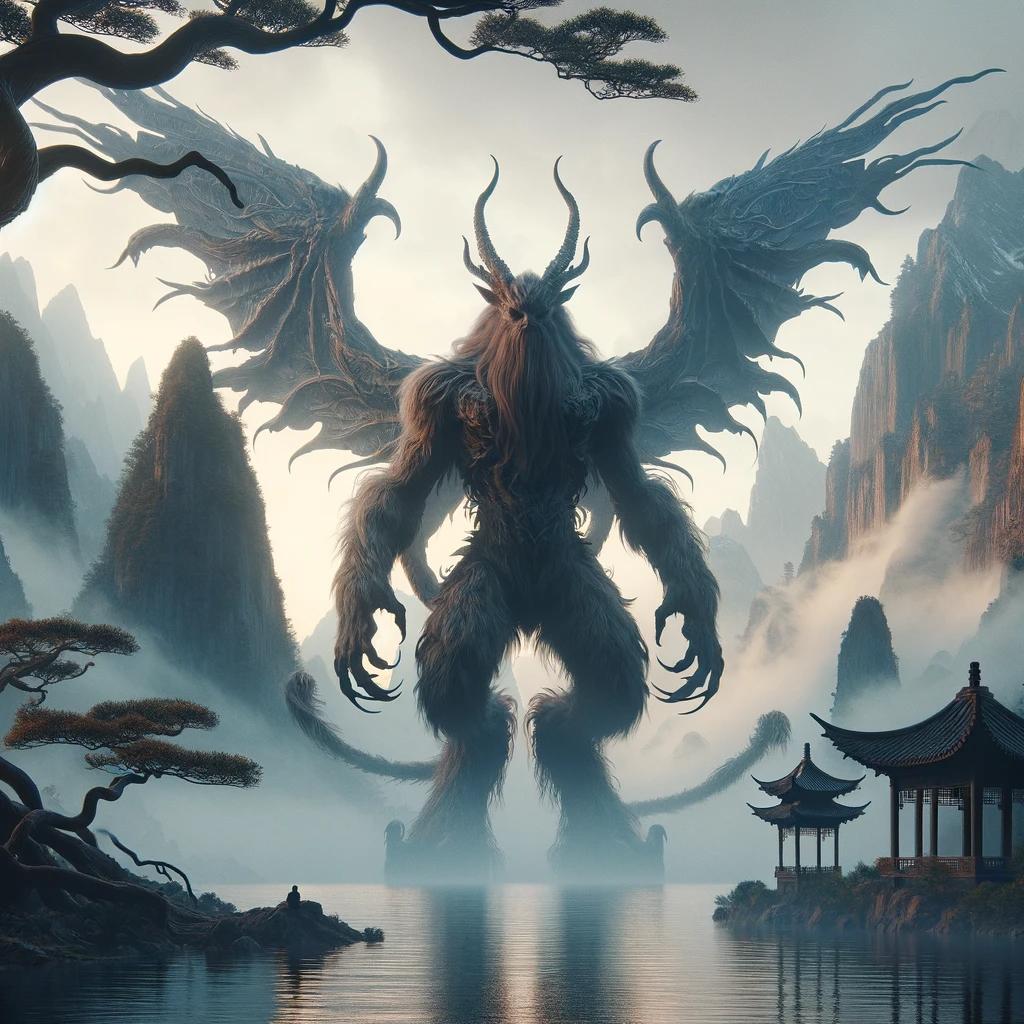
Dijiang Chinese mythology is a fascinating realm of ancient gods and mystical creatures. In this article, we explore the enigmatic deity Di Jiang and his connections to various humanoid beings such as Bigfoot, Sasquatch, Yowie, Tokoloshe, Boggy Creek Monster, Orang Pendek, Almas, Ucumar, Monkey Man of New Delhi, and Mande Barung.
We also delve into Di Jiang’s ancestry, his association with the creator Pan Gu, and his alternate name Hun Dun. Additionally, we explore Japanese mythical creatures and gain insights into Chinese chaos mythology.
Stay tuned for an intriguing journey into Dijiang Chinese mythology.
Overview of Dijiang: The Strange and Ancient God
Dijiang, the enigmatic deity of Chinese mythology, is a figure shrouded in mystery and antiquity. With a peculiar appearance, Dijiang has captivated the imagination of believers and myth enthusiasts alike.
Descriptions depict Dijiang as a yellow sack-like being with six legs, four wings, and a faceless visage. However, recent portrayals have shown variations with crimson, black, or flesh-colored skin.
Despite lacking eyes, mouth, nose, or ears, Dijiang possesses a love for singing and dancing, which adds to the enigma surrounding this ancient god. The origins of Dijiang trace back to different mythologies, with some belief systems considering Dijiang a direct descendant of Pan Gu, the Creator of the World.
In other mythologies, Dijiang is known as Hun Dun, meaning ‘Chaos,’ and is associated with the Four Evils.
The Mythical Creatures of Dijiang Chinese Mythology
Embark on a fascinating journey through the realm of Dijiang Chinese mythology, where a plethora of captivating creatures awaits. From humanoid legends to cryptid beings, this section unravels the enigma surrounding these mythical entities.
Bigfoot, Sasquatch, and Yowie: Furry Humanoids in Dijiang Mythology
Discover the captivating tales of Bigfoot, Sasquatch, and Yowie, humanoid creatures with shaggy fur, believed to have deep roots in Dijiang’s mythological realm. These enigmatic beings have long been associated with the mysterious and untamed wilderness, leaving behind an air of intrigue and speculation.
Tokoloshe, Boggy Creek Monster, and Orang Pendek: More Humanoid Creatures
Delve into the lore surrounding Tokoloshe, Boggy Creek Monster, and Orang Pendek, other humanoid creatures intertwined with Dijiang Chinese mythology. Legends depict them as elusive, often sighted in forests and remote areas.
Explore their unique characteristics and their significance within the mythos.
Almas and Ucumar: Cryptid Beings in Dijiang Mythos
Unearth the mysteries surrounding Almas and Ucumar, cryptid beings that play a role in Dijiang’s mythos. These elusive creatures, known for their otherworldly presence, continue to evoke curiosity and speculation among believers and enthusiasts.
Discover the tales and legends surrounding these captivating beings.
Monkey Man of New Delhi and Mande Barung: Connections to Dijiang
Uncover the intriguing connections between the Monkey Man of New Delhi and Mande Barung with Dijiang’s mythology. Despite originating from different regions, these legends share striking similarities, suggesting possible cross-cultural influences.
Explore the stories and cultural significance behind these remarkable beings.
Di Jiang’s Ancestry and Associations
Delve into the fascinating ancestry and associations of Di Jiang, the enigmatic deity in the realm of Dijiang Chinese mythology.
Di Jiang as Descendant of Pan Gu, the Creator of the World
According to certain mythologies, Di Jiang is believed to be a direct descendant of Pan Gu, the revered Creator of the World.
It is said that Di Jiang emerged from the last breath of Pan Gu, making him a significant figure in the mythos.
Hun Dun: Di Jiang’s Alternate Name and Connection to the Four Evils
In various mythologies, Di Jiang is also recognized as Hun Dun, meaning ‘Chaos.’
This designation emphasizes his connection to the Four Evils, adding a distinct layer of complexity to his character. As Hun Dun, Di Jiang embodies chaos and its manifestations in the world, contributing to the intricate narrative of Dijiang Chinese mythology.
Japanese Mythical Creatures in Relation to Dijiang
In the realm of Dijiang Chinese mythology, intriguing connections can be found between its fascinating creatures and the mythical beings of Japanese folklore. These Japanese mythical creatures provide a unique perspective that enriches the understanding of Dijiang’s mystical realm.
Kappa: Aquatic Creatures of Japanese Mythology
One prominent creature in Japanese folklore is the Kappa, a water-dwelling creature often depicted as a mischievous trickster. These aquatic beings share similarities with some of the humanoid creatures in Dijiang mythology, such as their elusive nature and interactions with humans near bodies of water.
Tengu: Legendary Beings with Bird-Like Features
The Tengu, legendary creatures with long noses and bird-like features, also have ties to Dijiang mythology. Known for their martial arts skills and love for mischief, Tengu are often associated with spiritual realms.
Their presence in both Japanese and Dijiang mythologies hints at a shared cultural influence.
Yokai: Diverse Supernatural Beings
Japanese folklore abounds with various yokai, a collective term for supernatural creatures. Within this vast array of creatures, some yokai bear similarities to the cryptid beings found in Dijiang mythology. The Yokai enrich the mythological tapestry, showcasing the diversity of mystical beings and their connections across different cultures.
- Kappa – Water-dwelling tricksters
- Tengu – Bird-like beings with martial arts skills
- Yokai – Diverse supernatural creatures
Exploring the Japanese mythical creatures in relation to Dijiang mythology provides a broader understanding of the interconnectedness of mythologies across cultures.
This exploration reveals common themes, shared archetypes, and the universality of human imagination in creating fantastical beings.
Hundun: Insights into Chinese Chaos Mythology
In the realm of Chinese mythology, the enigmatic figure known as Hundun holds a significant place. Originating from the concept of chaos, Hundun represents the formless and primordial state before the creation of the world as we know it.
Within Dijiang Chinese mythology, Hundun is regarded as one of the Four Evils, along with Dijiang himself.
Often depicted as a mysterious entity lacking defined features, Hundun embodies the chaotic and unpredictable forces that existed in the early stages of creation.
Representations of Hundun vary, with some describing it as a faceless creature with multiple limbs, while others depict it as an amorphous mass of energy or mist.
Hundun’s symbolic significance lies in its association with the concept of emptiness and potentiality.
It serves as a reminder that chaos and disorder are intrinsic parts of the process of creation and transformation. While chaos may seem overwhelming and frightening, it also holds the seeds of new beginnings and possibilities.
In ancient Chinese cosmology, Hundun played a crucial role in the unfolding of the universe. It is believed that the chaos represented by Hundun eventually gave way to the creation of order and harmony under the influence of deities like Dijiang and Pan Gu.
The chaotic nature of Hundun serves as a powerful metaphor for the cyclical nature of existence, reflecting the continuous interplay between chaos and order.
Throughout Dijiang Chinese mythology, Hundun serves as a reminder of the delicate balance between chaos and order and the transformative power that chaos holds.
It signifies the importance of embracing the unknown and accepting the inevitable changes that occur in life. By recognizing the presence of Hundun within ourselves and the world around us, we can navigate the ever-changing landscape with wisdom and adaptability.
Other Chinese Mythical Creatures
Explore the fascinating world of Chinese mythology as we delve into other mythical creatures associated with Dijiang Chinese mythology. These creatures captivate the imagination and bring further depth to this ancient folklore.
Cherufe: The Fiery Monster of Mapuche Mythology
A mythical creature from Mapuche mythology, the Cherufe is a monstrous being associated with fire. It is believed to dwell within volcanoes, causing eruptions and destruction. Discover the legends surrounding this fearsome creature and its significance in Dijiang Chinese mythology.
Kappa: The Aquatic Creature of Japanese Folklore
Embark on a journey to Japan and encounter the Kappa, a creature from Japanese mythology. Known for its amphibious nature and mischievous behavior, the Kappa is often depicted as a humanoid with a turtle-like appearance.
Learn about its connection to Dijiang and its role in both Chinese and Japanese folklore.
Intulo: The Lion-like Beast of Zulu Mythology
Step into the world of Zulu mythology and encounter the Intulo, a lion-like creature believed to possess supernatural powers. Explore the tales of this majestic beast and its significance in Dijiang Chinese mythology.
Gator Man: The Mythical Creature of Florida’s Swamps
Delve into the myths and legends of Florida as we unravel the mysteries surrounding the Gator Man. This intriguing creature, with its half-man, half-crocodile form, is said to lurk in the swamps of the Sunshine State.
Discover its connection to Dijiang Chinese mythology and the tales that surround it.
Naga: The Serpent Deity of Hindu and Buddhist Mythology
Enter the realm of Hindu and Buddhist mythology and encounter the Naga, a powerful serpentine deity often depicted with multiple heads and a majestic form. Uncover the significance of the Naga in Dijiang Chinese mythology and its role as a symbol of wisdom and protection.
Thetis Lake Monster: The Aquatic Creature of Vancouver Island
Embark on a journey to Vancouver Island and unravel the mysteries surrounding the Thetis Lake Monster. This cryptid creature is said to inhabit the depths of Thetis Lake, captivating the imagination of locals and visitors alike.
Discover its connection to Dijiang Chinese mythology and the legends associated with it.
Sea Monk: The Mysterious Marine Creature
Dive into the depths of oceanic folklore and encounter the enigmatic Sea Monk. This legendary creature, often described as a half-man, half-fish hybrid, evokes both curiosity and fear. Explore its significance in Dijiang Chinese mythology and the tales that have circulated throughout the ages.
Uncover the rich tapestry of mythical creatures in Chinese folklore, as each creature adds another layer of wonder and complexity to the world of Dijiang Chinese mythology.
Frequently Asked Questions about Dijiang Chinese Mythology
- What is Dijiang Chinese mythology?
- Who is Di Jiang?
- What are some of the mythical creatures mentioned in Dijiang Chinese mythology?
- Are there any connections between Dijiang Chinese mythology and other mythologies?
- What is the significance of Di Jiang’s strange appearance?
- Is Di Jiang related to Pan Gu, the Creator of the World?
- What is the story behind Hun Dun, the alternate name for Di Jiang?
- In what ways are Japanese mythical creatures related to Dijiang Chinese mythology?
- Are there other Chinese mythical creatures mentioned?
In this section, we will address some frequently asked questions related to Dijiang Chinese mythology.
It aims to shed light on the nature of this mythological realm and provide insights into its various aspects.
Firstly, Dijiang Chinese mythology refers to the collection of myths, creatures, and gods present in ancient Chinese folklore.
These myths revolve around Di Jiang, a peculiar and ancient god with a unique appearance.
Di Jiang is a prominent figure in Dijiang Chinese mythology. He is often described as a sack-like creature with six legs, four wings, and no facial features.
However, some contemporary depictions portray Di Jiang with crimson, black, or flesh-colored skin. Despite lacking eyes, mouth, nose, or ears, Di Jiang is said to have a fondness for singing and dancing.
Various mythical creatures are associated with Dijiang Chinese mythology. Some of the humanoid beings mentioned include Bigfoot, Sasquatch, Yowie, Tokoloshe, Boggy Creek Monster, Orang Pendek, Almas, and Ucumar. Additionally, connections are drawn between Dijiang and other legendary creatures such as the Monkey Man of New Delhi and the Mande Barung.
Di Jiang’s ancestry and associations are subjects of interest in Dijiang Chinese mythology. It is believed that he is a direct descendant of Pan Gu, the Creator of the World, born from Pan Gu’s last breath.
In certain mythologies, Di Jiang is also known as Hun Dun, meaning ‘Chaos,’ and is considered one of the Four Evils.
In relation to Dijiang Chinese mythology, Japanese mythical creatures also play a significant role.
These creatures share connections and similarities with the beings found in Dijiang mythology, showcasing the interconnectedness of various Eastern mythologies.
Although this section mainly focuses on Dijiang Chinese mythology, it is worth noting that there are many other Chinese mythical creatures mentioned throughout the rich tapestry of Chinese folklore.
By exploring the frequently asked questions surrounding Dijiang Chinese mythology, we hope to provide a deeper understanding of this captivating mythological realm and the creatures and gods that reside within it.
.












